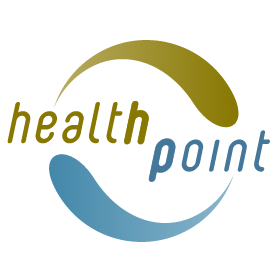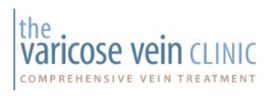Central Auckland, East Auckland, North Auckland, South Auckland, West Auckland > Specialised Primary Health Care >
Varicose Vein Clinic
Specialised Primary Healthcare - Vein Treatment Service
Description
Welcome to the Varicose Vein Clinic, where we treat all types of venous leg conditions from large varicose veins to small spider veins.
You will receive a thorough evaluation of your problem and we will discuss treatment options, presenting the advantages, disadvantages and possible risks of various procedures. Most treatments are non-surgical which include Endovenous Laser Ablation and Ultrasound Guided Sclerotherapy. In other situations treatment may not be necessary.
Our vein physician Dr Ivan Connell, a phlebologist and sclerotherapist, offers comprehensive non-surgical treatment of varicose veins. Procedures offered include:
- Endovenous Laser Treatment
- Ultrasound Guided Sclerotherapy
- Micro-Sclerotherapy
- Duplex Ultrasound Venous Mapping
Doctors
-

Dr Ivan Connell
Phlebologist and Sclerotherapist
How do I access this service?
Contact us
Appointments can be made directly or by referral from your regular doctor.
What to expect at your varicose veins assessment
- A detailed history will be taken
- A clinical examination will be carried out
- A duplex ultrasound scan will be performed
Referral
Fees and Charges Description
Dr Connell is a Southern Cross Affiliated Provider. Please contact us for my details. Treatment may also be covered by other insurance providers.
Services Provided
Varicose veins are bulging veins that lie just beneath the skin (superficial veins). They occur when the walls of a vein are weak or damaged or if the valves in the vein that normally stop the blood from flowing backwards are impaired, resulting in pooling of the blood and stretched veins. Besides being unattractive, varicose veins can be painful and cause inflammation or ulceration. The following different types of surgery are available if varicose veins require treatment: Sclerotherapy – a tiny needle is used to inject a chemical solution into the vein that causes the vein to collapse. This approach is recommended for small varicose veins or spider veins that typically appear on the upper legs. You will need to wear elastic bandages or stockings over the treated area for some time after surgery. Vein stripping – the varicose veins are cut out and the veins that branch off them are tied off. The cuts (incisions) made in the skin are closed with sutures. You will need to wear elastic bandages or stockings over the treated area for some time after surgery. This procedure requires anaesthesia. Phlebectomy – small cuts (incisions) are made in the leg and the varicose veins are pulled out with a tiny hook-like instrument. The cuts are closed with tape rather than sutures and, once healed, are almost invisible. You will need to wear elastic bandages or stockings over the treated area for some time after surgery. This procedure requires anaesthesia. Click on the link to learn more about varicose veins and their non-surgical treatment
Varicose veins are bulging veins that lie just beneath the skin (superficial veins). They occur when the walls of a vein are weak or damaged or if the valves in the vein that normally stop the blood from flowing backwards are impaired, resulting in pooling of the blood and stretched veins. Besides being unattractive, varicose veins can be painful and cause inflammation or ulceration. The following different types of surgery are available if varicose veins require treatment: Sclerotherapy – a tiny needle is used to inject a chemical solution into the vein that causes the vein to collapse. This approach is recommended for small varicose veins or spider veins that typically appear on the upper legs. You will need to wear elastic bandages or stockings over the treated area for some time after surgery. Vein stripping – the varicose veins are cut out and the veins that branch off them are tied off. The cuts (incisions) made in the skin are closed with sutures. You will need to wear elastic bandages or stockings over the treated area for some time after surgery. This procedure requires anaesthesia. Phlebectomy – small cuts (incisions) are made in the leg and the varicose veins are pulled out with a tiny hook-like instrument. The cuts are closed with tape rather than sutures and, once healed, are almost invisible. You will need to wear elastic bandages or stockings over the treated area for some time after surgery. This procedure requires anaesthesia. Click on the link to learn more about varicose veins and their non-surgical treatment
Varicose veins are bulging veins that lie just beneath the skin (superficial veins). They occur when the walls of a vein are weak or damaged or if the valves in the vein that normally stop the blood from flowing backwards are impaired, resulting in pooling of the blood and stretched veins. Besides being unattractive, varicose veins can be painful and cause inflammation or ulceration.
The following different types of surgery are available if varicose veins require treatment:
Sclerotherapy – a tiny needle is used to inject a chemical solution into the vein that causes the vein to collapse. This approach is recommended for small varicose veins or spider veins that typically appear on the upper legs. You will need to wear elastic bandages or stockings over the treated area for some time after surgery.
Vein stripping – the varicose veins are cut out and the veins that branch off them are tied off. The cuts (incisions) made in the skin are closed with sutures. You will need to wear elastic bandages or stockings over the treated area for some time after surgery. This procedure requires anaesthesia.
Phlebectomy – small cuts (incisions) are made in the leg and the varicose veins are pulled out with a tiny hook-like instrument. The cuts are closed with tape rather than sutures and, once healed, are almost invisible. You will need to wear elastic bandages or stockings over the treated area for some time after surgery. This procedure requires anaesthesia.
Click on the link to learn more about varicose veins and their non-surgical treatment
Travel Directions
Situated at Level 1, Ascot Central (next to Ascot Hospital), just off the Greenlane/Motorway interchange on Greenlane Road East. Best entrance and parking is via Ellerslie Racecourse Drive.
Public Transport
The Auckland Transport Journey Planner will help you to plan your journey.
Parking
There is 90min parking available in front of the Ascot Hospital.
Best entrance and parking is via Ellerslie Racecourse Drive.
Website
Contact Details
Ascot Central, 7 Ellerslie Racecourse Drive, Remuera, Auckland
Central Auckland
-
Phone
(09) 520 9465
Website
Level 1, Ascot Central
Ellerslie Racecourse Drive
Remuera
Auckland 1051
(Off Greenlane Road East)
Street Address
Level 1, Ascot Central
Ellerslie Racecourse Drive
Remuera
Auckland 1051
(Off Greenlane Road East)
Postal Address
PO Box 26-305
Epsom
Auckland 1344
Was this page helpful?
This page was last updated at 3:32PM on November 9, 2021. This information is reviewed and edited by Varicose Vein Clinic.

